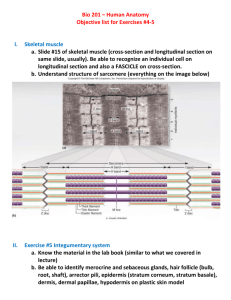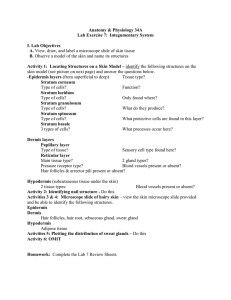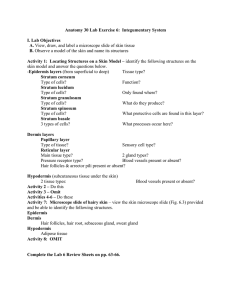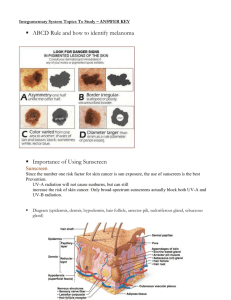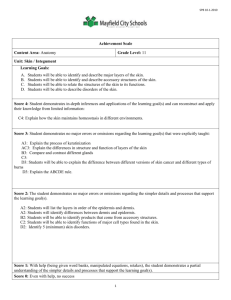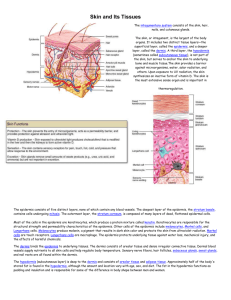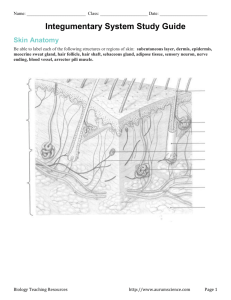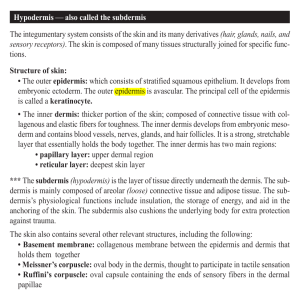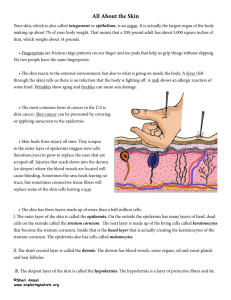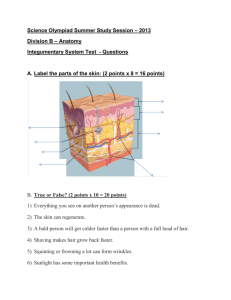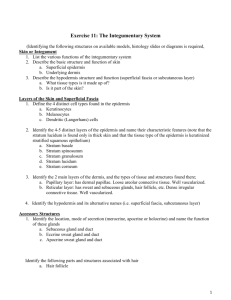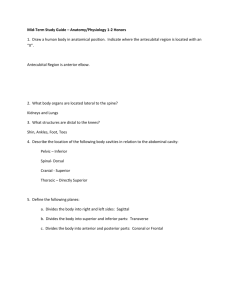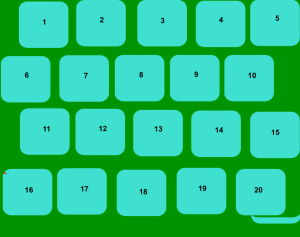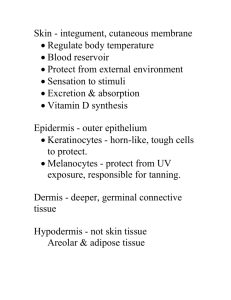the file here - Forever Laser Institut
advertisement
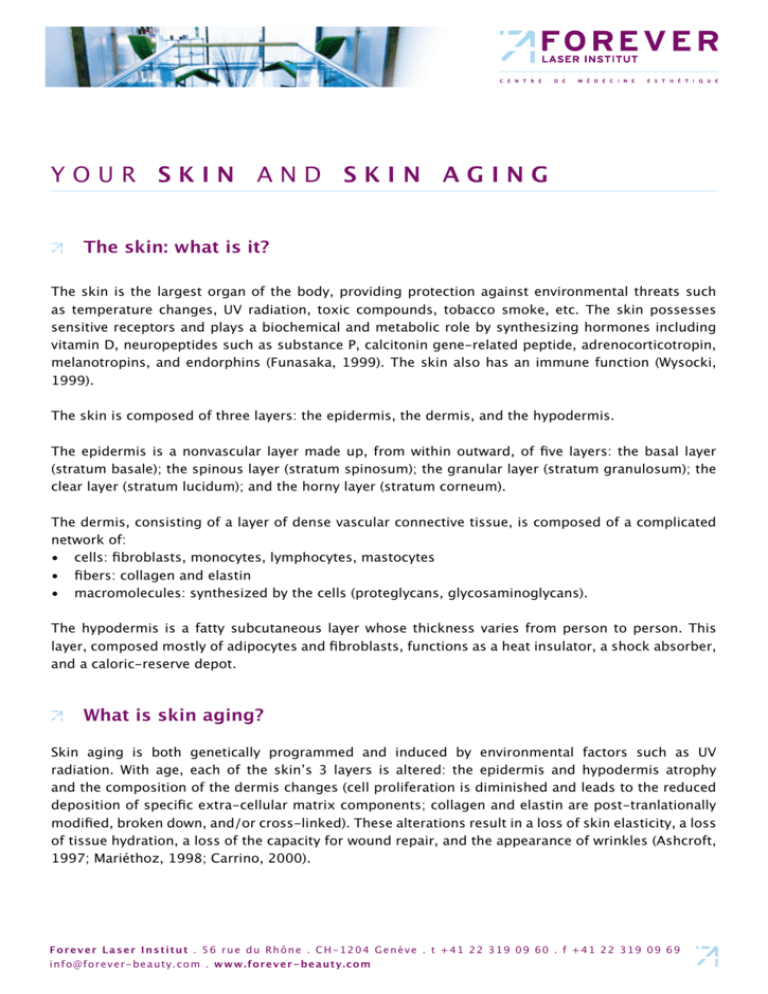
Your skin and skin aging The skin: what is it? The skin is the largest organ of the body, providing protection against environmental threats such as temperature changes, UV radiation, toxic compounds, tobacco smoke, etc. The skin possesses sensitive receptors and plays a biochemical and metabolic role by synthesizing hormones including vitamin D, neuropeptides such as substance P, calcitonin gene-related peptide, adrenocorticotropin, melanotropins, and endorphins (Funasaka, 1999). The skin also has an immune function (Wysocki, 1999). The skin is composed of three layers: the epidermis, the dermis, and the hypodermis. The epidermis is a nonvascular layer made up, from within outward, of five layers: the basal layer (stratum basale); the spinous layer (stratum spinosum); the granular layer (stratum granulosum); the clear layer (stratum lucidum); and the horny layer (stratum corneum). The dermis, consisting of a layer of dense vascular connective tissue, is composed of a complicated network of: • cells: fibroblasts, monocytes, lymphocytes, mastocytes • fibers: collagen and elastin • macromolecules: synthesized by the cells (proteglycans, glycosaminoglycans). The hypodermis is a fatty subcutaneous layer whose thickness varies from person to person. This layer, composed mostly of adipocytes and fibroblasts, functions as a heat insulator, a shock absorber, and a caloric-reserve depot. What is skin aging? Skin aging is both genetically programmed and induced by environmental factors such as UV radiation. With age, each of the skin’s 3 layers is altered: the epidermis and hypodermis atrophy and the composition of the dermis changes (cell proliferation is diminished and leads to the reduced deposition of specific extra-cellular matrix components; collagen and elastin are post-tranlationally modified, broken down, and/or cross-linked). These alterations result in a loss of skin elasticity, a loss of tissue hydration, a loss of the capacity for wound repair, and the appearance of wrinkles (Ashcroft, 1997; Mariéthoz, 1998; Carrino, 2000). F o r e v e r L a s e r I n s t i t u t . 5 6 r u e d u R h ô n e . C H - 1 2 0 4 G e n è v e . t + 4 1 2 2 3 1 9 0 9 6 0 . f + 4 1 2 2 3 1 9 0 9 69 i n fo@ forever-beauty . com . w w w . fo re v e r- b e aut y . c om
